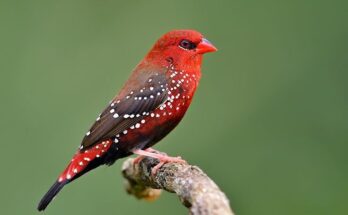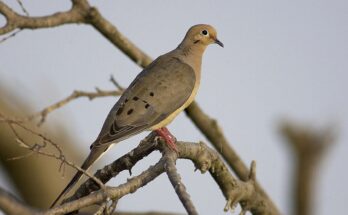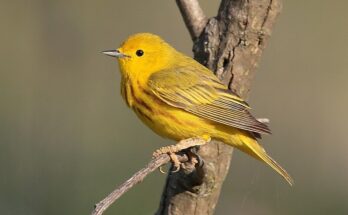Are you ready to explore the amazing world of Hummingbirds in Maryland? Have you ever seen a bird that looks like a flying jewel, hovering in mid-air with wings beating so fast they’re just a blur? Welcome to the magical world of hummingbirds! These tiny, colorful birds are nature’s own aerial acrobats, zipping through gardens and forests with incredible speed and grace. In Maryland, these fascinating creatures bring joy and wonder to many backyards and natural areas. Let’s explore the enchanting world of hummingbirds and discover the species that call Maryland home, even if just for a short while.
1. Ruby-throated Hummingbirds
- Scientific Name: Archilochus colubris
- Size: 7-9 cm (2.8-3.5 inches) in length
- Weight: 2-6 grams (0.07-0.21 ounces)
- Lifespan: 3-5 years in the wild
- Diet: small insects, and tree sap
The Ruby-throated Hummingbird is the star of the show when it comes to hummingbirds in Maryland. These tiny birds are the most widespread hummingbird species in eastern North America. Males are easily recognized by their bright, iridescent red throats that shine like rubies in the sunlight. Females and young birds have a white throat and belly with green upper parts. Despite their small size, Ruby-throated Hummingbirds are incredible long-distance travelers, flying non-stop across the Gulf of Mexico during their annual migration!
Ruby-throated Hummingbirds are a common sight in Maryland from late April to early October. They’re frequent visitors to gardens, especially those with red, tubular flowers like trumpet honeysuckle or bee balm. These birds play a crucial role in pollination, transferring pollen from flower to flower as they feed on nectar.
2. Black-chinned Hummingbird
- Scientific Name: Archilochus alexandri
- Size: 8-9 cm (3.1-3.5 inches) in length
- Weight: 2.3-4.9 grams (0.08-0.17 ounces)
- Lifespan: Up to 10 years in the wild
- Diet: Nectar from flowers, small insects, and spiders
The Black-chinned Hummingbird is a rare visitor to Maryland, but it’s an exciting sight for any birdwatcher lucky enough to spot one. These hummingbirds are named for the black band under their chin, which can appear velvety black or iridescent purple depending on the light. The males have a thin strip of iridescent purple feathers below this black band, while females lack the flashy throat coloration.
While Black-chinned Hummingbirds are more common in western parts of North America, they occasionally wander eastward, leading to rare sightings in Maryland. These birds are highly adaptable and can be found in a variety of habitats, from desert scrub to urban gardens.
Read More: 4 Types Of Doves in Michigan
3. Calliope Hummingbird
• Scientific Name: Selasphorus calliope
• Size: 7-8 cm (2.8-3.1 inches) in length
• Weight: 2.3-3.4 grams (0.08-0.12 ounces)
• Lifespan: 3-5 years in the wild
• Diet: Nectar from flowers and small insects
The Calliope Hummingbird is the smallest bird native to North America and Canada, making it a truly tiny wonder. While it’s a rare visitor to Maryland, spotting one of these diminutive birds is a treat for any bird enthusiast. Male Calliope Hummingbirds are known for their striking magenta throat feathers, which form streaks rather than a solid patch. Females are more subtly colored with a pale throat and light cinnamon wash on their sides.
Calliope Hummingbirds typically breed in the mountainous western parts of North America, but they sometimes wander eastward during migration. In Maryland, they’re most likely to be seen in late summer or early fall when they’re moving toward their wintering grounds.
Despite their small size, Calliope Hummingbirds are known for their feisty nature. They’re not afraid to chase away much larger birds from their favorite feeding spots. Their name comes from Calliope, the muse of epic poetry in Greek mythology, perhaps a nod to their outsized personality in such a tiny package.
4. Rufous Hummingbird
- Scientific Name: Selasphorus rufus
- Size: 8-9 cm (3.1-3.5 inches) in length
- Weight: 2-5 grams (0.07-0.18 ounces)
- Lifespan: Up to 8 years in the wild
- Diet: small insects, and tree sap
The fierce little bird known as the Rufous Hummingbird is distinguished by its vivid orange-red coloring and combative nature. Although they are not frequently observed in Maryland, these birds can be seen there on occasion, particularly during the fall migration. The male Rufous Hummingbird can be easily recognized by its rusty red back and sides, as well as its brilliant orange-red throat. Females have green upperparts and rufous-washed flanks.
Rufous Hummingbirds are known for making one of the longest migratory journeys of any bird in the world, relative to their body size. They breed as far north as Alaska and winter in Mexico, covering an impressive distance for such a tiny creature.
These hummingbirds are famous for their aggressive nature. They’re not afraid to chase away other hummingbirds, and even much larger birds, from their favourite feeding spots. This bold behaviour helps them survive in the competitive world of nectar-feeding birds.
5. Anna’s Hummingbird
- Scientific Name: Calypte anna
- Size: 9-10 cm (3.5-4 inches) in length
- Weight: 3-6 grams (0.11-0.21 ounces)
- Lifespan: Up to 8 years in the wild
- Diet: small insects, and tree sap
Anna’s Hummingbird is a stunning bird named after Anna Masséna, Duchess of Rivoli. While it’s primarily a western species, there have been rare sightings in Maryland, much to the delight of local birdwatchers. Male Anna’s Hummingbirds are known for their iridescent reddish-pink throat and crown, which can appear dull brown or sparkling red-pink depending on the light. Females have a small red patch on their throat and are otherwise mostly green and grey.
Anna’s Hummingbirds are unique among North American hummingbirds because they’re largely non-migratory. In their native western range, they stay year-round, even in areas that experience occasional freezing temperatures. This hardiness is part of what allows them to occasionally wander to eastern states like Maryland.
These hummingbirds are known for their elaborate courtship displays. The male will climb up to 130 feet in the air before diving steeply towards the ground. As he pulls up from the dive, he produces a loud chirp with his tail feathers, an impressive sound for such a small bird!
Final Thoughts
Hummingbirds are truly one of nature’s marvels. Their tiny size, brilliant colours, and incredible flying abilities make them a joy to watch. While the Ruby-throated Hummingbird is the most common species in Maryland, the possibility of spotting a rare visitor like a Black-chinned or Calliope Hummingbird adds excitement to any birdwatching adventure.



